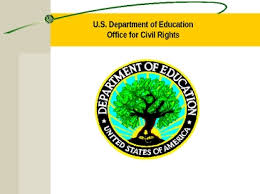New York’s proposed legislation contains extensive provisions dealing with victims’ rights. Specifically, Section 6442 of the legislation requires adoption of a Victim and Survivor Bill of Rights that provides for the right to:
1. Make a report to local law enforcement and/or State Police 2. Have disclosures of sexual violence treated seriously 3. Make a decision about whether or not to disclose a crime or incident and participate in the conduct of the criminal justice process free from outside pressures from college or university officials 4. Be treated with dignity and receive from officials courteous, fair and respectful health care and counseling services 5. Be free from any suggestion that the Victim/Survivor is at fault when these crimes and violations are committed or should have acted in a different manner to avoid them 6. Describe the incident to as few individuals as practicable and not be required to unnecessarily repeat a description of the incident 7. Be free from retaliation by the institution, the accused and/or their friends, family and acquaintances 8. Exercise civil rights and practice of religion without interference by the investigator, criminal justice or conduct process of the institution.
By and large, these provisions reflect best practices, and most institutions would say that their processes already include these principles. However, there is a real and consequential difference between an understanding that an approach is best practice and a statutory obligation. In several instances, we believe institutions would benefit from additional direction and guidance in order to fully understand what the bill intends to impose as a matter of legal mandate. For example, Item 4 above could be read as creating a “right” that victims receive from their institution “health care and counseling services,” and that these services must be “courteous, fair, and respectful” to victims/survivors. However, some institutions do not provide counseling and/or health care services to any students, and the question is whether this legislation would require them to do so. We suspect not, and rather the likely intent is to ensure that if these services are provided to students generally, the service providers are sensitive to victims/survivors’ needs. Nonetheless, given the language used, clarification that the legislation is not mandating that institutions provide these services (or, in the alternative, that it is) would be useful. Items 5 and 6 are certainly understandable as best practices, but, as statutory obligations, they may cause consternation, at least without further guidance. Is asking a victim how much he or she had to drink “suggesting” the victim is at fault (even though that information can be crucial to determining whether a victim was incapacitated)? At what point does going back to a victim with follow up questions to make sure the institution has a complete and accurate picture of events become “unnecessary” and subject the institution to a claim that this provision has been violated? Again, these concepts largely reflect best practices, but when included as part of a statutory scheme that presumably creates legal rights, and potential claims, their inclusion without more direction is likely to cause implementation problems. With respect to Item 7, while every institution should take steps to protect against retaliation, no institution can guarantee that retaliation will not occur, especially retaliation by an accused’s friends or family who might have no direct connection to the institution and therefore are beyond the institution’s control (other than to bar these individuals from campus, but, of course, this does nothing to stop electronic or other retaliatory communication). Yet this provision could be read as literally requiring the institution to provide that the victim will be free from that retaliation. Finally, the reference to the “practice of religion” in Item 8 could benefit from some further explanation. We suspect the intent is to ensure that one’s exercise of religious beliefs is not used to frustrate full access to the investigatory and adjudicatory processes, such as by scheduling an interview or hearing on an individual’s Sabbath. Section 6442 also provides that an institution “shall list the following options in brief” -- presumably as something separate from the Bill of Rights but the legislation does not explicitly so state -- and make clear that these options can be pursued by a victim simultaneously:
1. Receive resources, such as counseling and medical attention 2. Confidentially or anonymously disclose a crime or violation 3. Make a report to an employee with the authority to address complaints, including the Title IX Coordinator, “a student conduct employee,” University police or campus security, or family court or civil court 4. Make a report to local law enforcement and/or state police
In Section 6443, the legislation requires that each victim/survivor be provided with the following information (presumably upon their making a report), even though it is largely a repeat of what is in the Bill of Rights:
1. The right to notify local law enforcement or the State Police 2. The right to report confidentially to institutional officials, who can assist in obtaining services for victims/survivors 3. The right to disclose confidentially to and obtain services from New York State, New York City and County services; 4. The right to report to institutional officials who can offer privacy and can assist in obtaining resources 5. The right to file a criminal complaint with University Police or campus security 6. The right to file a report of “sexual assault, domestic violence, dating violence and/or stalking” and the right to consult with the Title IX Coordinator, which reports are to be investigated in accordance with the institution’s policy and “a victim/survivor’s identity shall remain private at all times if said victim/survivor wishes to maintain confidentiality” 7. When the accused is an employee, the right to report the incident to Human Resources or the right to request that a confidential or private employee assist in reporting to Human Resources. Disciplinary proceedings are to be conducted in accordance with any collective bargaining agreement. If the accused is an employee of an affiliated entity or a vendor, institutional officials are to assist in reporting the matter to that affiliated entity or vendor and if necessary “assist in obtaining a persona non grata letter, subject to legal requirements and college policy.” 8. The right to withdraw a complaint or involvement from the institutional process at any time
Some of these items don’t directly involve the institution – such as the victim’s right to obtain services from the State of New York, the City of New York and “County services.” It is not quite clear why this is made an institutional obligation, or how an institution is even to comply with it when the services referenced are not defined. In a similar vein, Item 5 refers to the “right to file a criminal complaint … with campus security.” At many institutions, members of campus security are not actually sworn law enforcement officers, so they are not in a position to accept a criminal complaint for filing. Likely, this section of the legislation was intended to apply in situations where campus police/security have that authority, and was not intended to require campus security forces to otherwise purport to accept criminal complaints; however, clarification in this regard would be helpful. Of more significance is Item 6 from Section 6443, which suggests that a victim has an absolute right to report and have their identity kept confidential. Item 8 likewise creates the impression that a victim has complete and total authority to cease an investigation or disciplinary process. These requirements create either an actual conflict with Title IX, which we doubt was the intent, or, at least, potential confusion for everyone. Under Title IX an institution must generally defer to a victim/survivor’s wishes regarding confidentiality, but there are some instances in which OCR allows and even expects/requires the institution to act despite the victim’s wishes (e.g., where there is a threat to the victim/survivor or the campus community), even if doing so might require disclosing the identity of the victim/survivor despite his/her wishes. Section 6445 replicates the Title IX considerations in determining whether to pursue an investigation despite a victim’s wishes, but it makes no mention of disclosure of the victim’s identity. On its face, then, this legislation could be read as prohibiting disclosure of a victim’s identity even if concerns over campus safety dictate that an institution proceed with an investigation and even if the only way to effectively do that is to identify the victim. We doubt that the legislation intends to create this conflict, but, unless this language is modified to reconcile these obligations with Title IX, institutions may find themselves wrestling with potentially inconsistent federal and state obligations. The legislation also provides certain “protections and accommodations” for victims:
1. When the accused is a student, a “no contact Order” 2. Assistance from University Police or campus security (or other college officials) in obtaining an order of protection, or if outside of New York, an equivalent order; to receive a copy of the order and have a college or university official explain it (including the consequences of a violation) and answer questions about it; and to receive assistance from University police or campus safety to effectuate an arrest if they have arrest powers or seek local law enforcement assistance if they do not 3. If the accused is a student and presents a risk to the community, interim suspension (and other interim measures if the accused is not a student but is otherwise a community member) 4. Issuance of a persona non grata letter to non-community members who are accused 5. Reasonable and available interim measures such as accommodations that effect a change in academic, housing, employment, transportation or other applicable arrangements in order to ensure safety, prevent retaliation and avoid an ongoing hostile environment
Again, while many of these elements are already “standard issue” under Title IX, there are several that are not. Under Item 1, the legislation appears to give the person asserting a violation an absolute right to a no contact order without any showing at all other than naming an accused, which order is without duration, and which places full responsibility on the accused to leave a public place “immediately” if the victim and accused “observe” each other there. On its face, the provision allows no regard for the circumstances of the individuals involved, or even the campus. On a large campus where the two individuals rarely encounter each other, this provision might not be such a concern. But what about on a small campus where the individuals share the same major? Surely, this provision is not intended to require that upon an unsubstantiated allegation -- instantly and permanently -- the other student is barred from all of his/her classes, eating in the one dining hall or using the one library if the accuser is there, etc. Institutions currently have the ability to evaluate the facts and circumstances and craft a stay away solution that is fair and reasonable. It would be a difficult and unfortunate situation if this bill intends to erase any individualized consideration. This is a provision that requires substantial clarification in order to be practicable. Interestingly, this portion of the legislation refers to “victims and survivors,” but doesn’t identify victims and survivors of “what.” In some places, the legislation refers to victims and survivors of sexual assault (and domestic and dating violence and stalking) and in other places to victims and survivors of the seemingly broader category of “sexual violence,” and in yet other places, like here, to neither – just victims and survivors. Again, more clarity in the final legislation will only help everyone involved.


 Apparently prompted by allegations from students and advocates, New York Governor Andrew Cuomo is reportedly directing an audit, to be conducted by representatives from the New York State Department of Education, Department of Health, Office of Victim Services and State Police, of institutions’ compliance with Education Law Article 129-B, the so-called “Enough is Enough” campus sexual violence legislation. According to published
Apparently prompted by allegations from students and advocates, New York Governor Andrew Cuomo is reportedly directing an audit, to be conducted by representatives from the New York State Department of Education, Department of Health, Office of Victim Services and State Police, of institutions’ compliance with Education Law Article 129-B, the so-called “Enough is Enough” campus sexual violence legislation. According to published  On October 28, 2016 the United States Supreme Court agreed to review the Fourth Circuit’s decision in Gloucester County School Board v. G.G. This case is about whether a Virginia School Board’s policy limiting students’ bathroom access to facilities that correspond to students’ biological gender is discriminatory. The case was brought by the ACLU, on behalf of transgender student G.G., alleging the School Board’s policy violates G.G.’s rights under the Constitution’s Equal Protection Clause and Title IX of the Education Amendments of 1972, and is inconsistent with U.S. Department of Education Office for Civil Rights (OCR)
On October 28, 2016 the United States Supreme Court agreed to review the Fourth Circuit’s decision in Gloucester County School Board v. G.G. This case is about whether a Virginia School Board’s policy limiting students’ bathroom access to facilities that correspond to students’ biological gender is discriminatory. The case was brought by the ACLU, on behalf of transgender student G.G., alleging the School Board’s policy violates G.G.’s rights under the Constitution’s Equal Protection Clause and Title IX of the Education Amendments of 1972, and is inconsistent with U.S. Department of Education Office for Civil Rights (OCR)  On June 2, 2016, the New York State Education Department and the New York State Office of Campus Safety published a 52-page joint
On June 2, 2016, the New York State Education Department and the New York State Office of Campus Safety published a 52-page joint  On April 24, the Department of Education’s Office for Civil Rights (“OCR”) issued new
On April 24, the Department of Education’s Office for Civil Rights (“OCR”) issued new